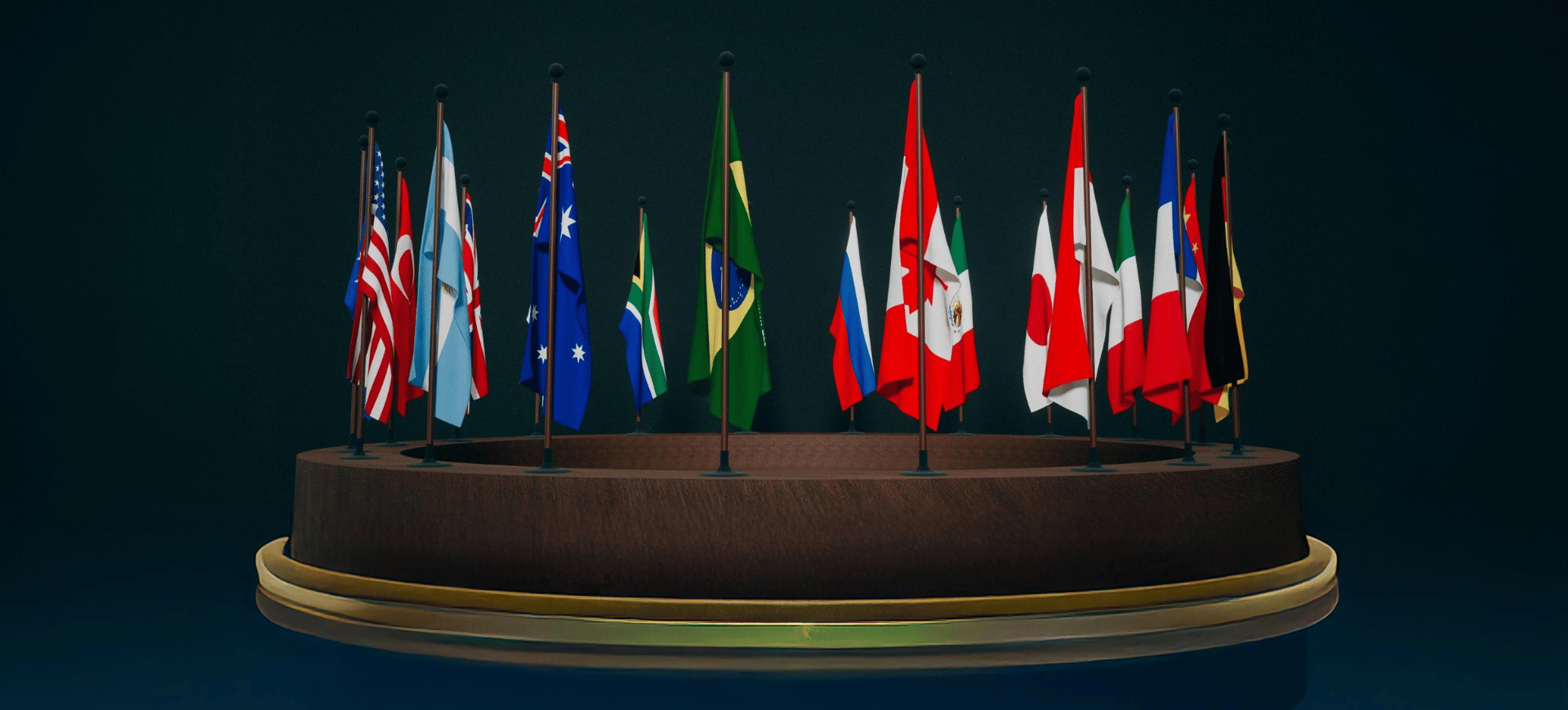Shaping the World’s Energy Future through G7 & G20 Governance
The future of world energy will be shaped by the response to several interconnected crises – climate change’s relentless global warming and extreme weather events, deadly conflicts in Ukraine and elsewhere, cyberattacks on North America’s critical energy infrastructure, and crippling debts and deficits in developing and key developed countries. Yet the global community still lacks a comprehensive, competent world energy organization to respond to them and the United Nations’ periodic energy-related summits have failed to meet the need.
The task of governing global energy in the way we need today and tomorrow thus falls to the world’s two key plurilateral summits institutions – the Group of Seven (G7) major advanced democratic powers and the Group of 20 (G20) systemically significant states. Their performance and prospects show that a clean, green, economically and ecologically sustainable, equitable energy future is possible, but they still have much to do to deliver it.
G7 Energy Governance
The G7 has been the first, fastest, most far-reaching and formidable global energy governor. At its first summit, in 1975, it recognized the existence and value of energy, with a focus on the future in an ecologically supportive way. Its leaders declared: “The industrial democracies are determined to overcome … serious energy problems … Our common interests require that we continue to cooperate in order to reduce our dependence on imported energy through conservation and the development of alternative sources.” Thus, energy conservation and clean energy from the development of alternatives to oil fuels was the future they foresaw and sought to foster.
From then until their most recent summit in Italy in June 2024, G7 leaders made 656 energy commitments, constituting 9% of those on all subjects and second among all subjects. G7 governments have complied with them at an average of 85%. They were led by the European Union at 95%, followed by the United States at 94%, the United Kingdom 92%, Germany 89%, Canada 87%, France 84%, Japan 80% and Italy 70%, with Russia at 62% during the expanded G8. Over the last four years alone, the G7 made 198 energy commitments, complied with them at 96%, with the US under President Joe Biden at 100%. Almost all were on clean, renewable energy and a just transition.
G7 summits have made many commitments on energy, climate change and the environment that are due for delivery in 2025, with five promising to end fossil fuel subsidies by then. Complying with this one commitment would conserve energy, spur the shift to renewables, save governments and their taxpayers $7 trillion a year according to the International Monetary Fund, cut greenhouse gas emissions by 20%, curb crime and corruption, and improve people’s health.
The next G7 summit, on June 15-17, 2025, chaired by Canadian prime minister Justin Trudeau, could act on this. When Trudeau hosted the G7 summit in 2018, the leaders – including US president Donald Trump – made five energy commitments, which secured complete compliance of 100%.
G7 summits have also repeatedly promised to support the UN’s 17 Sustainable Development Goals (SDGs) by 2030, including SDG 7 to “ensure access to affordable, reliable, sustainable and modern energy for all.” Almost all are now off track. But with Covid’s crippling impact fading fast, and Trump due to depart before 2029, a heroic two-year G7 effort could meet the SDG 7 and the other closely related SDGs.
G20 Energy Governance
The newer, bigger, broader, North-South–balanced G20 has joined the G7 to help shape the world’s energy future in a slower but still supportive, increasingly ecologically sustainable, just way. It will do so much more after 2026.
The G20’s energy governance started at its first summit, in Washington DC in 2008, stating: “We remain committed to addressing other critical challenges such as energy security and climate change.”
At the second summit, in April 2009, G20 leaders “pledged to do whatever is necessary to … build an inclusive, green, and sustainable recovery … [and] make the transition towards clean, innovative, resource efficient, low carbon technologies and infrastructure.”
At their third summit, in September 2009, they made their historic commitment “to phase out and rationalize over the medium-term inefficient fossil fuel subsidies while providing targeted support for the poorest. Inefficient fossil fuel subsidies encourage wasteful consumption, reduce our energy security, impede investment in clean energy sources and undermine efforts to deal with the threat of climate change.”
During their 19 G20 regular summits through to November 2024, G20 leaders made 200 energy commitments, for 5% of all, putting energy in fifth place. Their governments’ compliance averaged 70%, led by France, the UK and Korea at 82%, followed by the US at 78%, Germany 76%, Brazil and China 74% each and India 72%. The above-average scores for the US, China and India, now the world’s largest fossil fuel–fired climate polluters, suggests the G20’s promising potential for leading a clean energy future from the key developing countries of both the Global South and North.
However, constraints will come from the 2025 G20’s host, South Africa, at 58% compliance, and from petro-power Saudi Arabia at 55%, Turkey 46%, coal-fueled Indonesia 60%, fossil fuel–rich Russia 62% and Argentina at 64%. Moreover, G20 compliance with its “dirty” energy commitments has averaged only 44%, and with its many commitments to phase out fossil fuels in the medium term only 56%. Still, G20 commitments on clean energy and renewables, technology transfer and innovation, energy efficiency, sustainability, a low- or no-emissions future, and SDG 7 average a high 86% compliance.
The G20 will help generate a greater clean energy future, but only starting three years from now.
As host of the G20’s Rio Summit in November 2024, Brazilian president Lula da Silva did little to govern energy, advance clean energy, or provide a boost for the UN’s climate summit that he will host in Belém in November 2025. The Rio Summit declaration made only one commitment on energy with a deadline, and it was five years away. It stated: “We support the implementation of efforts to triple renewable energy capacity globally and double the global average annual rate of energy efficiency improvements globally through existing targets and policies, similarly support the implementation with respect to other zero and low-emission technologies, including abatement and removal technologies in line with national circumstances by 2030.”
The next G20 host, for its summit in late November 2025, is coal-dependent South Africa, whose president, Cyril Ramaphosa, has put economic development ahead of clean energy and climate change control as his summit priorities. Then due to host in 2026 is Donald Trump. Only by 2027 does greater promise arise, when the UK’s clean energy committed Keir Starmer is likely to host. If the G20 repeats the hosting order of its first cycle, then come similarly committed Canada, Korea and France.
Propellors of Future G7 and G20 Energy Performance
Past and future advances in the G7 and G20 summit’s energy governance are propelled by six key forces. The first are the shocks that activate the vulnerability of the members, including the oil embargo in 1973, the Iranian revolution in 1979, the oil price spike in July 2008 to $147 a barrel, which helped ignite the American-turned-global financial crisis in August 2008, and Russia’s full-scale invasion of Ukraine in 2022. As 2025 starts, such shocks will be very strong, primarily from the growing extreme weather events from the climate change created by the world’s reliance on fossil fuels.
The second force, also very strong, is multilateral organizational failure, from the absence of a world energy organization, the competition among the partial, fragmented international organizations, and the failure of the UN’s climate summits to keep 1.5°C alive as post-industrial temperature rise target, and to revive 1.5°C at its most recent COP 29 meeting in November.
The third force is the globally predominant and internally equalizing overall and energy capabilities of G7 and G20 members, who must take up the task in effective, combined ways that all members craft and fully support. Such internal equality is currently small, due to America’s strong dollar, oil and gas production and growth, but will grow by 2027.
The fourth force, the common and converging democratic principles of the members, will be constrained by the actions of Trump, and the G20’s autocracies of China, Russia and Saudi Arabia, but should slowly grow after 2026.
The fifth force, the domestic political control and support of G7 and G20 leaders, is similarly small for the clean, green energy pioneers of Germany, France, the UK and Canada and stronger for the fossil fuel devotes of Saudi Arabia, Russia and China. But the results of the US mid-term elections in late 2026 should force Trump to adjust in greener energy ways, backed by most of his G7 colleagues with a much stronger political position at home by then.
The sixth force is the value the leaders place on the G7 and G20 as their personal clubs at the hub of an expanding network of global governance. This will be low for Donald Trump and Vladimir Putin for the next year or two, but should be stronger for Trump and other leaders after that.
This will enable the G7 to lead and the G20 to support a just transition to the clean, green, healthy, safe, world energy future that all will know they need, before it is too late.












